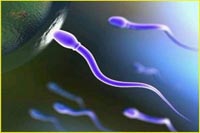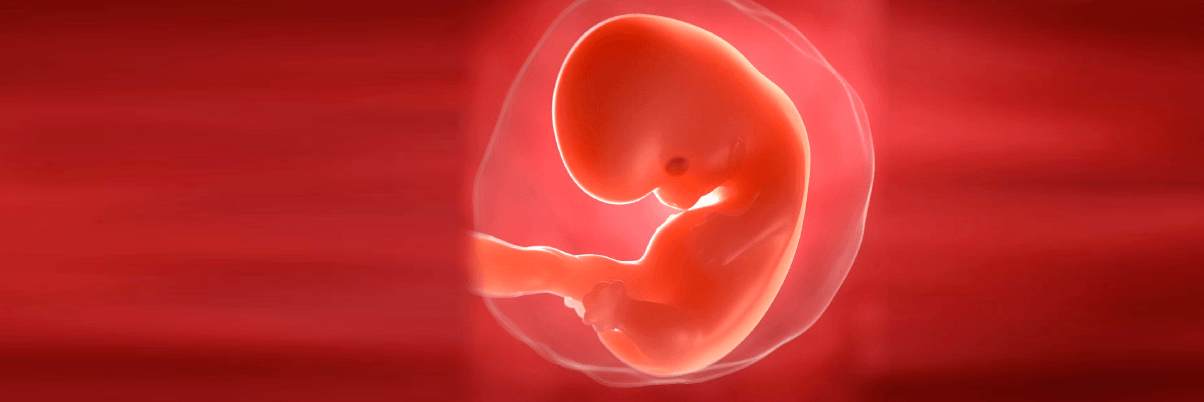Embryology
The human being is created from “Nutfa” which means a minute quantity of liquid or a trickle of liquid which remains after emptying a cup or a bucket. This is mentioned in several verses of the Qur’an like surah Al-Hajj (chapter 22) verse 5, and surah Al-Mominun (chapter 23, verse 14).
Man is created from “Alaq”
Man is created from Alaq(Congealed clot of blood) a leech like substances-Prof. Keith Moore:- A few years ago a group of young Arab students/scholars collected all information concerning embryology from the Qur’an, and followed the instructions of the Qur’an from Surah Furqan (chapter no. 25), verse no. 59 (25:59) which says, “Ask the person who knows.”
All this information so gathered from the Qur’an was translated into English and presented to Prof. Dr. Keith Moore who is the head of the department of Embryology in the University of Toronto, in Canada. At present he is one of the highest authorities in the field of Embryology throughout the world.

He was asked to give his opinion regarding the information concerning the field of embryology present in the Qur’an. After carefully examining the translation presented to him of the verses of the Qur’an, he said that most of the information concerning embryology mentioned in the Qur’an is in perfect conformity with modern discoveries in the field of embryology and does not in any way conflict with them, but there were few verses on which he could not comment as to whether they were right or wrong since the information provided by these verses was yet to be discovered or confirmed and also as there was no mention of these facts in modern writings and studies on embryology.
One of these verses is from Surah Alaq (chapter 96), verses 1 and 2: (96:1-2)
“Proclaim (or read!) in the name of thy Lord and Cherisher who created
Created man, out of a leech-like substance (a mere clot of congealed blood).
The word “Alaq” besides meaning a congealed clot of blood also means something which clings, a leech-like substance.
Dr. Keith Moore had no knowledge whether an embryo in the initial stages appears like a leech. To check this out he studied the initial stage of the embryo under a very powerful microscope in his laboratory and compared what he observed with a diagram of a leech- he was astonished at the resemblance between the two!
In this same manner he acquired more information on embryology (which was hitherto not known to him) from the Qur’an.
Prof. Keith Moore had earlier authored the book, “The Developing Human”. After acquiring new knowledge from the Qur’an, he wrote, in 1992, a new edition, (the 3rd edition of the same book) for which he got an award for the best medical book written by a single author.
This book has been translated into several major languages of the world and is used as a text book of embryology in the first year of medical studies. Prof. Keith Moore had no hesitation in accepting the Qur’an to be a Divine Revelation and Prophet Muhammad (Pbuh) to be a messenger of Almighty God.
Man created from a drop emitted from between the Back Bone and the Ribs:
The Qur’an mentions in Surah Al-Tariq (chapter no. 86), verses 5-7; (86: 5-7)
“Now let man but think from what he is created! He is created from a drop emitted proceeding from between the back bone and the ribs”.
In embryonic stages, the reproductive organs of the male and female, ie. the testicles and the ovaries, begin their development near the kidney exactly between the spinal column and the eleventh and twelfth ribs. Later they descend; the female gonads (ovaries) stop in the pelvis while the male gonads continue their decent before birth to reach the scrotum outside the body through the inguinal canal. Even after the embryonic stage after the decent of the reproductive organ, these organs receive their nerve supply and blood supply (from the Aorta) and lymphatic drainage which is in the area between the backbone (spinal column) and the ribs.
Human Beings created from “Nutfa” (minute quantity of liquid):
The human being is created from “Nutfa” which means a minute quantity of liquid or a trickle of liquid which remains after emptying a cup or a bucket. This is mentioned in several verses of the Qur’an like surah Al-Hajj (chapter 22) verse 5, and surah Al-Mominun (chapter 23, verse 14).
Science has confirmed in recent times that only one of the 300 million sperms is required for fertilisation of the ovum; this means that only a 1/300 millionth part or 0.000000003 quantity of sperms that are emitted is required for fertilisation.
Man created from Nutfatun Amsaj: (Mingled liquids)
In surah Al-Insan (chapter no. 76), verse 2; (76:2) “Verily We created man from a drop of mingled liquid”
The Arabic word “Nutfatin Amshajin” means mingled liquids which besides spermatic fluid contain other fluids like prostatic secretions, etc. which facilitate the movement of the sperm to help in fertilization.
Genetics:
The sex of a foetus is determined by the nature of the sperm and not the ovum. The sex of the child, whether female or male, depends on whether the 23rd pair of chromosomes is XX or XY respectively.
In surah Al-Najm (chapter no. 53), verse no. 45 and 56 (53: 45 and 46) He did create in pairs male and female from a small quantity of liquid when lodged in its place.”
The Arabic word “Nutfatin” means a minute quantity of liquid and “Turah” means gushing from the husband (male) and cannot refer to the wife (female).
In Surah Al-Qiyamah (chapter no. 75), verse 37-39 (75:37-39) “Was he not a drop of sperm emitted (in lowly form)? Then did he become a clinging clot; then did (Allah) make and fashions (him) in due proportion and of him He made two sexes, male and female.”
Here again it is mentioned that a small quantity (drop) of sperm (indicated by the word “Nutfatin maniyyan”) which comes from the husband is responsible for the sex of the foetus.
Foetus protected by three veils of darkness:
“Allah creates you in the womb of your mother- creation after creation within three veils of darkness.”
According to Prof. Keith Moore these three veils of darkness in the Qur’an refer to:
- anterior abdominal wall of the mother
- the uterine wall
- the amnio-chronic membrane.

